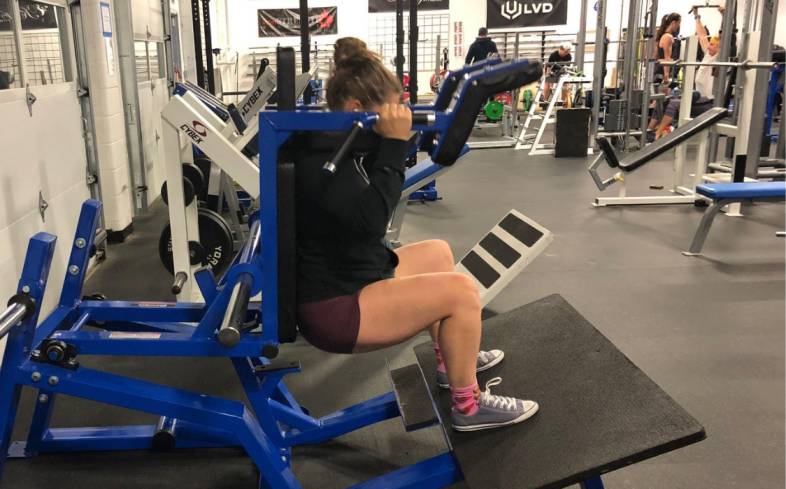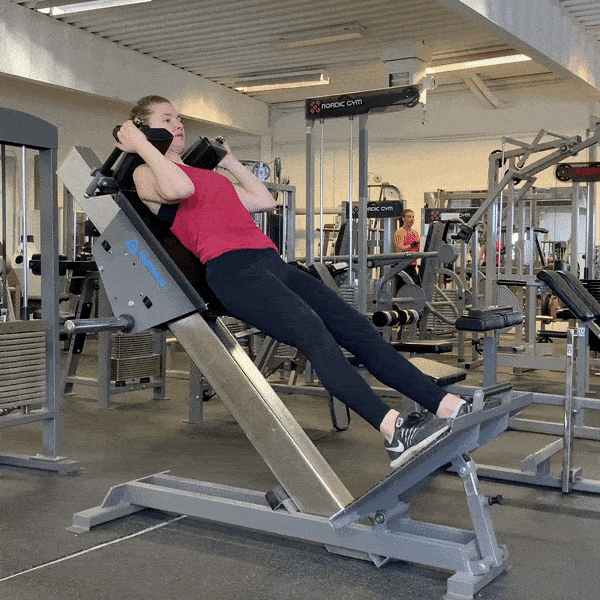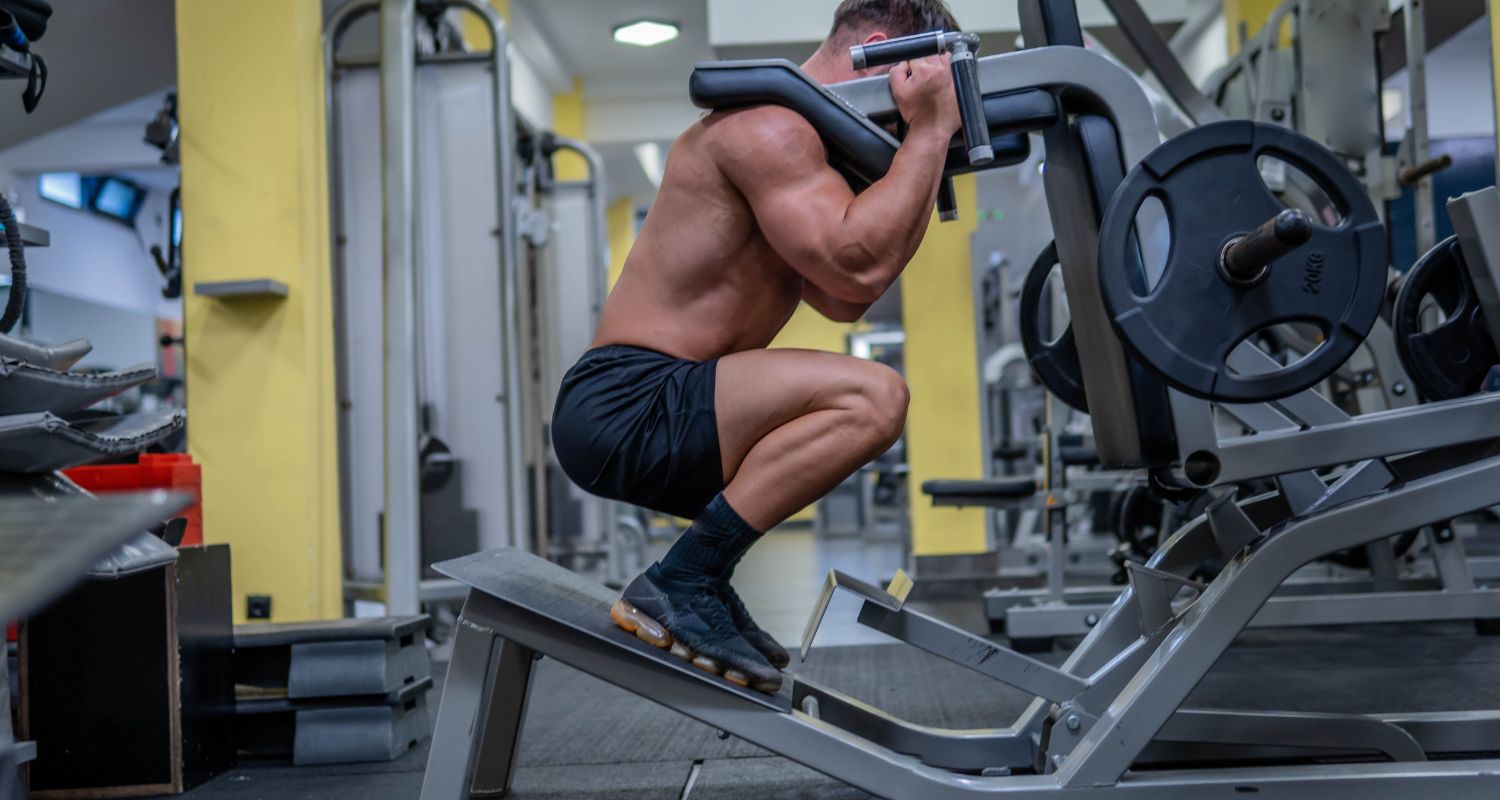Have you ever tried doing hack squats at the gym and found them surprisingly difficult? You’re not alone! Hack squats are notorious for being challenging, but that doesn’t mean you should avoid them.
In fact, hack squats are an excellent exercise for targeting your quadriceps, glutes, and hamstrings. So how can you make hack squats easier without sacrificing the benefits? Let’s explore some strategies in this article.
When you first attempt hack squats, you may feel overwhelmed by the amount of weight you’re asked to lift. The angle of the exercise, with your body leaning back against the resistance, places a significant load on your lower body and can be quite intense.
However, don’t be discouraged! By adjusting your form and incorporating progressive overload, you can gradually make hack squats more manageable. In this article, we will discuss the importance of proper technique, the role of warm-up exercises, and the benefits of adding variations to your hack squat routine.
So, if you’re looking to improve your hack squat performance and make them easier to handle, read on to discover some valuable tips and tricks.

The Difficulty of Hack Squats
Hack squats are a popular exercise in strength training and bodybuilding, known for their ability to target the quadriceps and build lower body strength. However, many individuals find hack squats to be quite challenging. In this article, we will explore the biomechanics of hack squats, the muscle groups targeted, and the weight distribution during the exercise.
We will also discuss common challenges faced by individuals while performing hack squats and provide tips on how to make them easier. Additionally, we will explore alternative exercises to hack squats, the benefits of hack squats, precautions and safety measures to consider, modifications for different fitness levels, proper nutrition, and the importance of recovery. Let’s dive in!
The Biomechanics of Hack Squats
Hack squats involve a specific movement pattern where the weight is placed behind the body, allowing for a more upright torso position. This positioning targets the quadriceps, glutes, and hamstrings, putting less strain on the lower back compared to traditional squats.

The Muscle Groups Targeted in Hack Squats
Hack squats primarily target the quadriceps muscles, which are the muscles located at the front of the thighs. These muscles play a crucial role in knee extension and are responsible for movements like walking, running, and jumping. Additionally, hack squats also engage the glutes (butt muscles) and hamstrings (back of the thighs), providing a comprehensive lower body workout.
The Weight Distribution in Hack Squats
During hack squats, the weight is distributed differently compared to other squat variations. The weight is placed directly behind the body, which creates a more favorable position for the quadriceps. This weight distribution allows for a more vertical movement pattern, putting less stress on the knees and lower back.

Common Challenges in Hack Squats
Despite the benefits of hack squats, they can be quite challenging for many individuals. Here are some common difficulties faced while performing hack squats:
The Strain on the Knees in Hack Squats
One of the primary challenges in hack squats is the strain placed on the knees. The movement pattern and weight distribution in hack squats require strong and stable knees to avoid injury. Individuals with knee issues or weak knee muscles may find hack squats particularly difficult and potentially harmful.
The Balance and Stability Required in Hack Squats
Hack squats require good balance and stability throughout the movement. The weight is placed further back, which may challenge individuals who struggle with balance. This instability can make it harder to maintain proper form and target the intended muscle groups effectively.
The Mental Aspect of Hack Squats
Hack squats can be mentally challenging as well. The exercise requires focus, determination, and mental resilience to push through the physical discomfort. Many individuals may find it difficult to overcome the mental barriers and push themselves to complete the exercise.
Tips to Make Hack Squats Easier
If you’re struggling with hack squats, don’t worry! There are ways to make them easier while still reaping the benefits. Here are some tips to help you improve your hack squat performance:
Optimizing Your Form and Technique in Hack Squats
Proper form and technique are crucial in hack squats. Ensure that your feet are shoulder-width apart, with your toes slightly pointed outwards. Maintain a neutral spine position and engage your core throughout the movement. Focus on keeping your knees aligned with your toes and your weight centered on your heels. This optimal form will help distribute the load more evenly and reduce strain on specific muscle groups.
Gradually Increasing the Weight in Hack Squats
Start with lighter weights and gradually increase the load as you become more comfortable with the exercise. Building strength and stability over time will make hack squats easier to perform. Progressive overload is essential for muscle growth and improvement in strength.
Using Assistance Machines or Bands in Hack Squats
If you’re struggling to maintain balance and stability during hack squats, consider using assistance machines or resistance bands. These tools can provide support and help you perform the exercise with proper form. Gradually reduce the assistance provided by the machines or bands as you gain strength and stability.

Alternative Exercises to Hack Squats
If hack squats continue to pose difficulties for you, there are alternative exercises that can still target the same muscle groups and provide similar benefits. Here are some alternatives to hack squats:
Leg Press as an Alternative to Hack Squats
The leg press is an effective alternative to hack squats that targets the same muscle groups. This machine-based exercise provides stability and controlled movement, making it an excellent option for individuals with balance or stability issues.
Front Squats as an Alternative to Hack Squats
Front squats are another viable alternative to hack squats. In front squats, the weight is placed in front of the body, challenging the quadriceps and upper body strength simultaneously. This exercise also emphasizes core engagement and stability.
Bulgarian Split Squats as an Alternative to Hack Squats
Bulgarian split squats are a single-leg variation of squats that focus on unilateral leg strength and stability. By isolating each leg, Bulgarian split squats help overcome muscle imbalances and improve overall lower body strength. This exercise can be particularly useful for individuals struggling with balance or knee strain in hack squats.
Benefits of Hack Squats
Despite the challenges they pose, hack squats offer numerous benefits. Some of the key advantages of incorporating hack squats into your workout routine include:
Strengthening the Quadriceps Muscles
Hack squats primarily target the quadriceps, making them an excellent exercise for strengthening and toning these muscles. Strong quadriceps are essential for everyday activities, sports performance, and overall lower body strength.
Improving Lower Body Strength and Power
Hack squats engage multiple muscle groups in the lower body, including the glutes and hamstrings. By working these muscle groups, hack squats contribute to overall lower body strength and power development. This increased strength can enhance athletic performance in activities such as running, jumping, and weightlifting.
Developing Muscular Endurance in the Legs
Hack squats can help improve muscular endurance by challenging the legs with higher repetitions and moderate weights. This increased endurance is beneficial for individuals involved in activities that require sustained lower body effort, such as long-distance running or cycling.

Precautions and Safety Measures for Hack Squats
Before attempting hack squats, it is important to consider some precautions and safety measures. These include:
Consulting with a Fitness Professional before Attempting Hack Squats
If you’re new to hack squats or have any pre-existing injuries or conditions, it is wise to consult with a fitness professional or a qualified trainer before attempting the exercise. They can assess your fitness level and provide guidance on proper form, weight selection, and modifications if necessary.
Using Proper Warm-up and Cool-down Techniques in Hack Squats
Proper warm-up and cool-down routines are crucial before and after hack squats. A dynamic warm-up, including exercises like leg swings, lunges, and squats, prepares the muscles for the demands of the exercise. Similarly, a cool-down that includes stretching and foam rolling can help reduce muscle soreness and improve recovery.
Listening to Your Body and Avoiding Excessive Strain in Hack Squats
Pay close attention to your body during hack squats. If you experience pain, discomfort, or excessive strain, it is essential to stop the exercise immediately. Pushing through pain can lead to injuries, so always prioritize your safety and well-being.
Modifications for Different Fitness Levels
Hack squats can be modified to accommodate different fitness levels. Consider these modifications based on your fitness level:
Adjusting the Range of Motion in Hack Squats
For beginners or individuals with limited mobility, adjusting the range of motion in hack squats can be helpful. Start with a shallow squat, gradually progressing to a deeper squat as your flexibility and strength improve. This modification allows you to work within your current limitations while still gaining the benefits of the exercise.
Using Lighter Weights for Beginners in Hack Squats
Beginners may find it challenging to lift heavy weights in hack squats. Start with lighter weights and focus on mastering the form and technique before increasing the load. Building a solid foundation will set you up for success as you progress in your fitness journey.
Increasing the Intensity for Advanced Lifters in Hack Squats
Experienced lifters can make hack squats more challenging by increasing the weight or incorporating advanced variations such as pause squats or jump squats. These modifications help stimulate muscle growth and promote further strength gains.
Proper Nutrition for Hack Squats
Maintaining a balanced and nutritious diet is essential for optimal performance in hack squats. Here are some key considerations:
Importance of a Balanced Diet for Performance in Hack Squats
A balanced diet that includes a variety of nutrient-rich foods provides the necessary fuel and energy for hack squats. Consume a mix of lean proteins, complex carbohydrates, and healthy fats to support muscle growth, repair, and overall performance.
Timing Meals and Snacks for Optimal Energy during Hack Squats
To maximize energy during hack squats, time your meals and snacks properly. Eat a balanced meal or snack containing carbohydrates and protein about two to three hours before your workout. Additionally, fueling up with a light snack, such as a banana or Greek yogurt, 30 minutes to an hour before exercising can provide a boost of energy.
Hydration and Its Impact on Hack Squat Performance
Staying hydrated is crucial for overall performance and safety during hack squats. Aim to drink water before, during, and after your workout to prevent dehydration. Proper hydration helps maintain optimal muscle function and prevents fatigue.
Importance of Recovery in Hack Squats
Proper recovery is key to preventing injuries and maximizing the benefits of hack squats. Consider the following:
Allowing Sufficient Rest and Recovery Time between Hack Squat Workouts
Muscles need time to repair and recover after intense workouts like hack squats. Schedule rest days between your hack squat sessions to allow your muscles ample time to recharge. This rest and recovery time help prevent overtraining and promote muscle growth.
Incorporating Active Recovery Exercises for the Lower Body
Active recovery exercises, such as light jogging, swimming, or cycling, can promote blood flow and aid in muscle recovery. Engaging in low-impact activities on rest days can help reduce muscle soreness and stiffness in the lower body.
Using Foam Rolling or Massage Therapy for Muscle Recovery after Hack Squats
Foam rolling or receiving regular massages can help relieve muscle tightness and enhance recovery. These techniques assist in breaking up adhesions and promoting blood circulation, which can alleviate post-workout muscle soreness and improve overall mobility.
Conclusion
Why are hack squats so hard? The biomechanics of hack squats, the muscle groups targeted, and the weight distribution contribute to the difficulty of this exercise. However, with the right techniques and modifications, hack squats can become more manageable.
By optimizing your form, gradually increasing the weight, and using assistance machines or bands, you can make hack squats easier while still reaping their benefits. Remember to listen to your body, consider alternative exercises if needed, and prioritize proper nutrition and recovery for optimal performance. Happy squatting!




